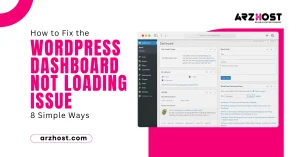Having a website is essential for both individuals and businesses in the modern digital world. To reach its target audience, a website must be actively promoted; having one alone is insufficient.
Blogging is an effective strategy for website promotion.
Online, there are quite a few blogs. The good news is that different target audiences are being pursued by each of those blogs. Still, it’s critical to differentiate yourself from the throng. You must thus put in a lot of effort to market your blog even if you created it with a content management system (CMS) or one of our top blog website builders.
The good news is that there are several ways to boost blog traffic, including working with other bloggers in your niche and utilizing social networking.
Keeping that in mind, here are 10 useful blog promotion strategies to help you get more people to read what you have to say.
With a focus on tactics and approaches to optimize your online presence, this post will examine how to blog like a pro to promote your website.

How To Promote Your Website? 10 Ways to Promote
Effective website promotion is essential for increasing visibility, drawing visitors, and eventually accomplishing your online objectives—whether they be community building, information sharing, or product sales.
With so many techniques at your disposal, it’s essential to concentrate on approaches that complement your objectives and target audience.
These are 10 efficient methods for advertising your website:
1: Prioritize easy keywords for SEO:
Start by conducting keyword research to identify relevant terms and phrases related to your website’s content. Focus on long-tail keywords with lower competition that are easier to rank for. Incorporate these keywords naturally into your website’s content, including titles, headings, meta descriptions, and body text.
Selecting the appropriate keywords to write content for is one of the core components of the SEO process. Selecting keywords with minimal ranking difficulty is now a tried-and-true strategy for new websites and websites without a strong backlink profile.
Those keywords can be found primarily by observing two factors:
The Keywords Explorer in Ahrefs can be used to accomplish this. One may:
What therefore should be done with challenging keywords? Of course, you can target them whenever you want, but keep in mind that it will likely take them longer to rank and require more backlinks.
Even though our post on keyword research had a lot going for it, it took almost four years of content revisions and backlink building to rank #1 in the United States. It was unable to maintain that position even then. KD 87 out of 100. reputable brands competing for the same term.
2: Do SEO for your existing pages:
Optimize your existing website pages for search engines by improving meta tags, headings, and content relevance. Ensure your website loads quickly, is mobile-friendly, and has a clean URL structure. Additionally, regularly update your content to keep it fresh and relevant, which can positively impact your search engine rankings.

Sometimes, increasing traffic can be achieved without producing new material. Perhaps all your outdated content needs are a little SEO work, such as this:
Here at ARZ Host, we use these actions regularly to boost traffic. with several achievements.
3: Create a free resource:
Offer a valuable free resource such as an eBook, whitepaper, or online tool related to your niche. Promote this resource on your website and across various channels to attract visitors and encourage them to engage with your content. Collect email addresses from interested users to grow your email list and nurture leads.
The key to this strategy is to produce original, high-quality content that is valuable and preferably revolves around your brand or product, and then make it freely accessible.
Put your audience’s needs first when creating anything, whether it’s a YouTube video series or a printable PDF manual. Then, you’ll witness the power of word-of-mouth advertising in action.
You must first choose a tested subject for your free resource.
By going to the social media profiles of writers and publications in your field and observing the engagement signals—likes, retweets, comments, etc.—you may manually generate ideas for articles. You can also look through online forums to find topics that interest members of your target demographic.
However, there are other tools available that can help you with this task.
Spark Toro is a tool that we frequently suggest for conducting any type of audience research. Simply enter themes that your target audience discusses a lot to find hashtags and related topics (among many other things).
Additionally, keyword research allows you to expand your alternatives using an all-in-one SEO toolkit like Ahrefs.
4: Partner up for a joint course or webinar:
Collaborate with complementary businesses or influencers to create joint courses or webinars. This partnership not only expands your reach to each other’s audiences but also adds credibility and expertise to your content. Promote the event through email marketing, social media, and your website to maximize participation.

Find companies that, although not directly competing with you, serve to a comparable audience.
Next, inquire about their interest in working with you on content. In this manner, their audience is pitched to by you, and yours is pitched by them.
For example, consider this: in 2018 webinar, “How to Get Website Traffic with Evergreen Content and Social Media Marketing,” was produced in collaboration with Buffer, a social media scheduling platform.
Our offerings are sufficiently different from one another to avoid competition, even though the audience was made up of digital marketers.
5: Repurpose your content for other marketing channels:
Repurpose your website content into different formats such as videos, infographics, podcasts, or slideshows. Distribute these materials across various marketing channels, including social media platforms, YouTube, and content-sharing websites. This diversification increases your visibility and attracts different audience segments.
The process of “repackaging” already-existing content for use on several marketing platforms is known as repurposing.
For example, you might break up a longer article into smaller ones and utilize those to guest blog on the original article. In fact, the “Splintering Technique” is so widely used that it has its own name.
6: Find guest blogging opportunities:
Identify reputable websites and blogs within your industry that accept guest contributions. Pitch well-researched and insightful articles that provide value to their audience while subtly promoting your website through backlinks. Guest blogging not only drives traffic but also enhances your brand’s authority and credibility.
When writing for other people, how can you advertise your own website?
Several things occur when you submit content on other websites:
Selecting the appropriate outlets for publication is essential, in addition to crafting a pitch that makes an impression.
You can use Google and search operators for this. The next step is to manually review every page. For the final step, use free website authority checker.
7: Syndicate your content:
Syndicate your website content to content aggregators, news websites, and online communities to reach a broader audience.
Utilize platforms like Medium, LinkedIn Pulse, or Reddit to republish your articles or share excerpts with links back to your website. This increases your content’s visibility and drives traffic back to your site.
Guest blogging and content syndication are comparable strategies. The only difference is that content syndication allows you to distribute the same item across several platforms.
Starting a guest blog and content syndication are essentially the same process. You require:
The choice to self-syndicate is included with syndication. You can therefore self-populate your content to other networks like Medium, Reddit, or LinkedIn, in contrast to guest blogging. With the help of these platforms’ sizable readership and unique distribution system, you can reach a wide audience at no cost.
8: Engage with your audience on social media:
Establish a strong presence on social media platforms relevant to your target audience. Regularly share your website content, engage with followers, and participate in relevant discussions and hashtags. Use social media advertising to reach a larger audience and drive traffic to your website.

Online groups and other social media channels are good resources for locating your target market. All you have to do is determine how and where you can offer them something special. There will be many opportunities to link to your website if you have anything significant to say.
Find out more about your audience first. Once more, SparkToro is what I propose for this.
Using a web monitoring service, such as Ahrefs Alerts or Google Alerts, is another approach to locate places that mention themes connected to your website (or even your website).
After focusing in on your communities, you might want to contact them using these general guidelines:
9: Start a community of your own:
Create an online community, such as a forum, Facebook group, or Slack channel, centered around your niche or industry. Foster meaningful discussions, provide valuable insights, and encourage members to share their experiences and resources. As the community grows, it becomes a valuable source of traffic and brand advocacy.
Consider starting your own community as well.
It could function if:
Further investigation reveals that having a community connected to your website has several advantages. The most important part of promotion will probably be word-of-mouth marketing.
One of the best forms of advertising is word-of-mouth. When members of the community believe that the value within will help others, it will begin to operate naturally. However, you might be able to affect word-of-mouth if you provide people with something to speak about, like a recently published study.
This will enable a community to grow organically and draw users, which will help to advertise your website. Just remember that using this strategy won’t guarantee results right away. Instead, approach it as a long-term investment that will provide dividends over time.
10: Build an email list to keep in touch with your audience:
Implement lead generation tactics such as offering incentives or gated content to capture email addresses from website visitors. Segment your email list based on interests and preferences to deliver personalized content and promotions. Regularly send out newsletters, updates, and exclusive offers to nurture relationships and drive traffic back to your website.
Bringing traffic to a website only once is not sufficient to consider it promoted. To stay in touch with your audience and entice them to return, you must have a plan in place. A fantastic method for doing this is email marketing.
With billions of users globally, email offers an unmatched opportunity to engage with your audience. Additionally, you may offer tailored, pertinent material that appeals to particular groups by segmenting your email list, which raises the likelihood that those groups will visit your website.
You’ll quickly find that one of your most significant assets is an email marketing list. As an example, HubSpot spent about $27 million to purchase the Hustle newsletter.
Email marketing is an equally economical medium. It’s an affordable technique to increase website visitors because it has a lot less overhead than traditional advertising. According to some research, email marketing can have a return on investment of up to 3600%.
It’s also of the simplest channels to follow. You can track important metrics like open and click-through rates with any email tool available, which helps you optimize your campaigns. A quick tip: if you use Google Analytics, be sure to enable integration in your email marketing platform so that traffic from each campaign is tracked automatically. This eliminates the need for you to manually enter UTM tags.
Speaking of email solutions, it’s important to pick the one that best suits your budget because usage-based fees will drive up expenditures.
Basically, there are two kinds of pricing models: those that are based on the quantity of contacts (like Mailchimp) and those that are based on the quantity of emails delivered (like Brevo). If you’re new to this channel, you might want to select a tool that will let you obtain as many contacts as you can at an affordable price.
Naturally, creating an email list is not that simple. However, if email marketing is combined with excellent content marketing, such a strategy practically automates the list-building process. All you have to do is post an enrolment form next to your content.
SEO, content marketing, partnerships, social media interaction, and community building are all essential components of an effective website promotion strategy. Through the successful implementation of these ten strategies, you may raise the exposure of your website, draw more visitors, and eventually accomplish your business goals.
Conclusion
There are other options available as well for free website promotion. You should definitely try new things and stick with what works. Take a chance if you believe something might be effective for your audience, even if it hasn’t been attempted before. However, be sure to gauge the outcomes.
Remember that effective marketing strategies don’t necessarily require truly innovative approaches. Even if they’re in a different field, your competitors and other prosperous companies are always good sources for promotion ideas.
Have inquiries?
FAQS (Frequently Asked Questions)
1: What are some effective ways to promote my website for free?
There are several free methods to promote your website effectively. Firstly, optimize your website for search engines by using relevant keywords in your content and meta tags. Secondly, leverage social media platforms to share your website content and engage with your audience. Additionally, consider guest blogging on relevant websites to reach new audiences and build backlinks to your site. Lastly, utilize email marketing by collecting email addresses from visitors and sending regular updates and promotions.
2: How can I use social media to promote my website effectively?
Social media is a powerful tool for website promotion. Start by creating profiles on popular platforms such as Facebook, Twitter, Instagram, and LinkedIn. Regularly share your website content, engage with your followers, and participate in relevant conversations. Utilize features like hashtags, stories, and live streams to increase visibility. Additionally, consider running targeted ads on social media to reach specific demographics and drive traffic to your website.
3: What role does search engine optimization (SEO) play in website promotion?
SEO is crucial for increasing your website’s visibility in search engine results pages (SERPs) and driving organic traffic. Start by conducting keyword research to identify phrases relevant to your content and target audience. Optimize your website’s meta tags, headers, and content with these keywords to improve its ranking. Additionally, focus on creating high-quality, valuable content that attracts links from other websites, boosting your site’s authority and visibility.
4: How can I utilize content marketing to promote my website?
Content marketing involves creating and sharing valuable, relevant content to attract and engage a target audience. Start by identifying your audience’s interests and pain points, then create content that addresses these needs. This can include blog posts, videos, infographics, podcasts, and more. Distribute your content through various channels, such as social media, email newsletters, and guest blogging, to reach a wider audience. Consistently producing high-quality content can establish your website as a trusted resource in your niche and drive organic traffic over time.
5: Are there any paid advertising options to promote my website?
Yes, paid advertising can be an effective way to promote your website and drive targeted traffic quickly. Options include pay-per-click (PPC) advertising on search engines like Google Ads and Bing Ads, as well as social media advertising on platforms like Facebook Ads and LinkedIn Ads.
These platforms allow you to target specific demographics, interests, and behaviors, ensuring your ads reach the right audience. Additionally, consider retargeting ads, which display your ads to users who have previously visited your website, increasing the likelihood of conversion.
However, it’s essential to carefully monitor and optimize your ad campaigns to ensure a positive return on investment (ROI).









